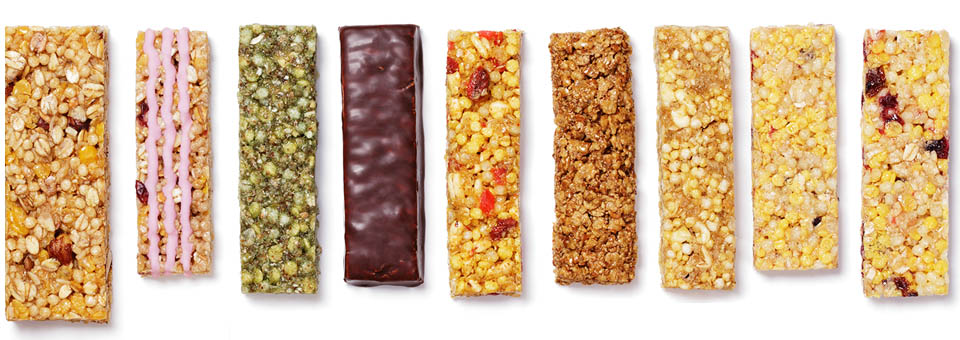Big Agra advertises energy bars as a healthy meal replacement for busy people on the go.
They’re even marketed to athletes who need quick energy before and after a workout.
But the reality is, this so-called “health food” contains an ingredient that is more addictive than cocaine, heroin and alcohol.1
I’m talking about the artificial sweetener high-fructose corn syrup (HFCS).
A Canadian study found that HFCS can cause behavioral reactions similar to those produced by common street drugs.2
Further research shows that HFCS and cocaine stimulate the same brain circuits.
But in addition to messing with your brain, high-fructose corn syrup causes fat to build up in your liver. This leads to a dangerous condition called nonalcoholic fatty liver disease (NAFLD).
I didn’t see much of this disease 10 or 15 years ago. And even then I only saw it in alcoholics. But many patients I’m seeing these days don’t drink at all.
And some are in their 30s and younger.
Today, NAFLD is one of the fastest-growing health epidemics in the world. Since 1980, cases of NAFLD have doubled, in lockstep with the rise of HFCS.
In fact, a study from the University of Florida found patients with fatty liver disease ate two to three times more high-fructose corn syrup.3
The problem is that modern HFCS isn’t like other sugars. Most of it goes straight to your liver instead of going into your muscles and tissues for energy. It promotes the formation of new fat molecules.
It triggers your liver cells to store this fat where it doesn’t belong. When those cells become inflamed, you get painful swelling and scarring. The disease can progress to hepatitis, cirrhosis, liver cancer, or liver failure.
NAFLD is a sneaky disease. Up to 30% of Americans have fatty liver disease and don’t even
know it. In the early stages, the only signs are some fatigue and maybe a dull pain in the right upper quadrant of your abdomen.Other symptoms include:
- Weakness
- Nausea
- Low sex drive
- Confusion
- Fluid build-up and swelling in the legs
I check my patients for fatty liver disease with a simple blood test…
The liver releases the enzymes ALT and AST when there is inflammation. If you want to know if you are at risk, ask your doctor to check your blood for these elevated liver enzymes.
Sadly, mainstream medicine has no effective drug or other treatment for NAFLD. But I help my patients prevent and even reverse fatty liver disease with these three simple natural solutions…
3 Supplements to Take for A Healthy Liver
- SAMe. Low SAMe levels are linked to various liver diseases including NAFLD.4 Research shows taking in more SAMe improves liver function and can even restore normal liver function. In one trial, patients with liver damage took 1,600 mg of SAMe a day. Their signs of liver damage were greatly reduced.5
You won’t find SAMe in food, but you can buy supplements at your health food store or on the Internet. I recommend taking 200 mg per day. You can increase the dose gradually to 400 mg up to 800 mg twice a day for better results.
- Vitamin E. This vitamin is actually a family of eight vitamins — four tocotrienols and four tocopherols. In a study from Malaysia, researchers gave 30 patients tocotrienols daily. After a year, 15 were completely cured of this “incurable disease.” Another five showed significant improvement.6 In other words, an incredible 67% of otherwise non-treatable NAFLD cases improved with just vitamin E.
You can add tocotrienols to your meal plan. Try eating plenty of nuts, eggs, and dark green leafy vegetables. Other excellent sources are annatto oil, palm oil and coconut oil. But most people don’t get enough from their food alone.
Look for a vitamin E supplement with “mixed tocotrienols.” Try to get at least 400 IU a day of d-alpha tocopherol. And stay away from any vitamin E labeled “dl-alpha” or “all-rac” tocopherol. The “dl” and “all-rac” means it’s synthetic. Also, vitamin E is a natural blood thinner. Consult your doctor if you’re on a blood thinning drug or have a bleeding disorder.
- CoQ10. This “heart supplement” can also help treat NAFLD. Researchers gave patients 100 mg of CoQ10 or a placebo every day. After 12 weeks, all of the signs of NAFLD were lower in the CoQ10 group. Four of the patients on CoQ10 even returned to normal liver function.7
You can get CoQ10 from food, especially beef, sardines, mackerel, peanuts, and organ meats like liver and kidney. But the amounts in food won’t be enough to stop NAFLD.
That’s why I recommend taking a supplement. If you’re over 40, you need the ubiquinol form of CoQ10. It may cost you a little more but it’s worth the price. Ubiquinol is almost three times more effective. Take 100 mg to 300 mg per day (divided into two doses).
To Your Good Health,
![]()
Al Sears, MD, CNS
1. Canadian Association for Neuroscience. “Addiction to unhealthy foods could help explain the global obesity epidemic, research suggests.” Science News. May 22, 2013.
2. Ibid.
3. Ouyang X., et al. “Fructose consumption as a risk factor for non-alcoholic fatty liver disease.” J Hepatol. 2008.
4. Wortham M., He L., et al. “The transition from fatty liver to NASH associates with SAMe depletion in db/db mice fed a methionine choline-deficient diet.” Dig Dis Sci. 2008 Oct.
5. Frezza M., Surrenti C., et al. “Oral S-adenosylmethionine in the symptomatic treatment of intrahepatic cholestasis. A double-blind, placebo-controlled study.” Gastroenterology. 1990 Jul.
6. Magosso E., Ansari MA., et al. “Tocotrienols and Nonalcoholic Fatty Liver: a Clinical Experience. 61st Liver Meeting, American Association for the Study of Liver Diseases (AASLD).” Hepatology. 2010.
7. Farsi F., et al. “Functions of Coenzyme Q10 Supplementation on Liver Enzymes, Markers of Systemic Inflammation, and Adipokines in Patients Affected by Nonalcoholic Fatty Liver Disease: A Double-Blind, Placebo-Controlled, Randomized Clinical Trial.” J Am Coll Nutr. 2016 May-Jun.

